This article was originally published in the October 2011 issue of Street Machine magazine
THE name John Evans is synonymous with Australian panel vanning and automotive art. He’s one of the true pioneers of these fields and can lay claim to building Australia’s first custom panel van, an HQ known as Tangerine Dream. With 40 years in the business, he’s survived the highs and the lows and had a hand in more legendary Aussie car culture moments than most could ever dream of.
How did a 1950s English kid wind up so involved in the Aussie car scene?
I was always fascinated with cars and [Lotus Sports Car founder] Colin Chapman built his fibreglass specials up the street from us. A visit to his factory as a five-year-old cemented the dream to both build and design cars. We migrated to Australia in ’56 and moved to Dandenong, which has always been a hotbed for cars. At 14 I was given a Standard 10, which I repaired and fitted with a twin-Webered Hillman donk. It taught me how to use tools and even held the G/Gas record at Calder in ’68 [laughs]. I then built an EH sedan with triples on a 186 and raced it at the Mr Holden titles.
John pictured with his own CV8 Monaro company car, Don Hailes’s outrageous 1980 Corvette Stingray and James and Helen North’s burnout-busting LX hatch
How did you make the step from dragging an EH to becoming one of our first vanners?
I was a keen surfer and regularly spent weekends away. I swapped the EH for an HR ute but got sick of sleeping under the tarp so bought a canopy, which I decked out with a few creature comforts. It worked okay but a mate had a stock HG van and I envied the amount of room he had. In ’71 I was signwriting at Kevin Dennis Motors so got staff rates on one of the first HQ vans built. I optioned it with all the good bits – 308, four-speed, LSD and GTS pack – and it came finished in Tangerine Orange. I decked out the rear and made an archway purely to separate the driver’s compartment from the living quarters; all stuff simply to make it comfortable and practical for our weekends away.
John is a keen guitarist and has played with various bands virtually non-stop for the past 30 years. “I regularly practice in my office and jam with friends as a way to unwind, plus the Racepaint factory has some pretty cool acoustics which is a bonus!”
That makes it sound like the whole custom van thing almost happened accidentally.
That’s pretty much it. I enjoyed the creativity of designing and building stuff, and being a signwriter I liked to make my cars individual. A guy in a white Statesman-fronted HQ pulled me over one day. He loved what I’d done with my van and was keen to develop his – that was well-known vanner David Baird and the HQ was Igloo. We ended up becoming great friends and formed the Victorian Panel Van Club in 1974, which just snowballed. I was working for a design company called Graf-X International and was signwriting cars such as the Toranas of Peter and Phil Brock.
What first got you into airbrushing?
I read US Truckin’ magazine and loved the airbrush work they were doing to their vans. From an artistic side I could never find a medium I was totally comfortable working with, but once I picked up an airbrush it all came together. Alan Hemple at Graf-X International bought a Bedford as a rolling advert for the new offshoot Graf-X Trick Trucks. The Beddie was wild with wraparound murals and had a mid-mounted big-block Chev. The work started to roll in and I was airbrushing anything and everything. We even built the flamed ’59 Chevy for Mad Max that the bikies trashed, and I can still remember fixing the eight exhaust tips onto the bonnet for the fake injection!
The Graf-X Trick Truck was one of the first vans to receive John’s airbrushing touch. This Bedford was near-new and featured full wrap-around murals a mid-mounted big-block Chev!
How was Tangerine Dream developing at this stage?
I’d won a heap of van shows and been doing more body mods and better interiors. One of Graf-X’s customers had an L88 Corvette, which I ripped a mould of the bonnet scoop from and fitted. I was always trying to keep it one step ahead but we ended up making hundreds of those scoops and they became extremely popular. I was tipped to win the ’76 Movin’ Free Spectacular, so put in a heap of hours detailing it, but got T-boned by a drunken stoner in a Mini a few days before. Not only did I miss the show but Tangerine Dream was set to be the orange van in Mad Max so I missed out on that accolade, too! They ended up using our apprentice’s orange van and, of course, the rest is history.
Vanning for John started with the purchase of a brand spankers HQ. It evolved over to become Tangerine Dream, winning a swag of trophies while still being used for daily duties and weekend getaways
Is that how your black HQ van Reincarnation evolved?
I rebuilt TD with a new bodyshell and black paint under that name. Later, Cheviot sponsored me with a set of 10in Hotwires and wanted the van at Bathurst, so I gave it a rebuild with flares big enough to cover the new rims. I designed and built the Manta bodykit and went back to orange paint as the black just wasn’t cutting it. It was now known as Tangerine Dream II and felt right again.
Tangerine Dream II was born after the HQ was returned to its original Tangerine colour in preparation for Bathurst 1977. A sponsorship deal from Cheviot saw the Manta kit developed to cover the 10in Hotwires
Vanning was well and truly going crazy, and you and a partner formed Vancraft. What was it like to be part of one of Australia’s first dedicated van shops?
It was an exciting and busy place to work and was a one-stop van shop. We did everything in-house and had a hand in a heap of high-profile show vans such as John Skilbeck’s Hallucination XB and Mark Simons’ Wrest Point Holden. We also built the 3XY Freedom Machine and later 3XY/Coca-Cola Easy Roller Bedfords and even a turbo’d 4WD Bedford camper for BF Goodrich called The Bush Boss.
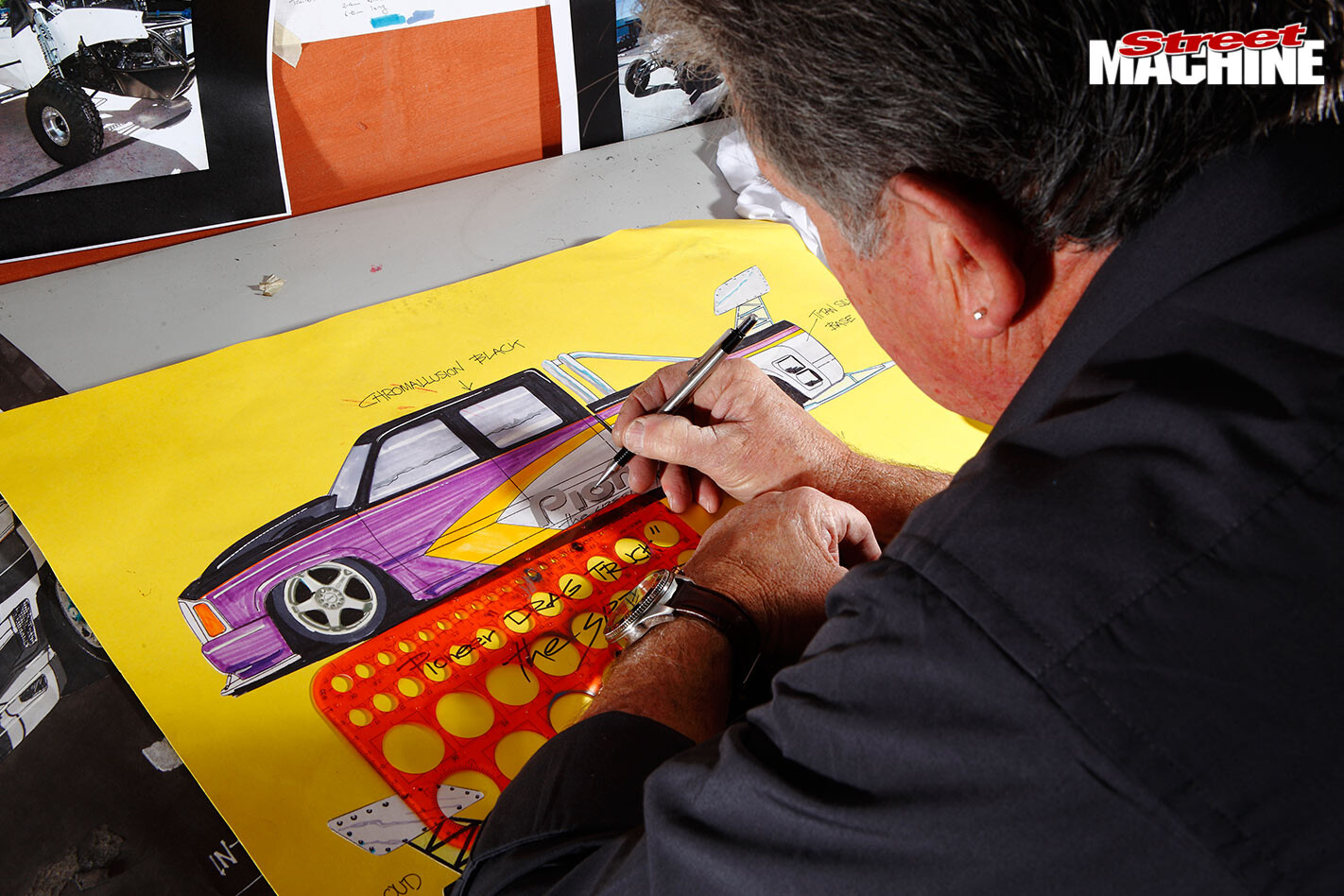
It must have felt like the van craze was unbreakable.
Exactly. We had a big factory with 10 staff and always had a backlog of work. I remember leading a run to Swan Hill with hundreds of vans in convoy. We rolled into town and everyone including the police just freaked out – it was just the sheer size that intimidated everyone. It’s almost incomprehensible to think that by 1979, not even two years later, all this was starting to wane. I sold Tangerine Dream in ’79 to a guy who fitted the 454 out of Steve Abbott’s Van Rat, and built a black Chevy Luv with a V8 and Jag rear. Then in the space of three weeks the Vancraft partnership, my first marriage and the band I played in all broke up!
John’s reputation as a leader in the van industry made the manufacturers take notice back in the day. His advice and input was sought by both Chrysler and Holden prior to the release of new models
How did you turn things around to recover from that?
First and foremost was meeting my wife Lucy. We’ve been married now for 29 years and she’s the backbone and inspiration for what I do. We started Stylestripe Customs and did the odd van and a few boats, but mainly did contract work for GM painting out the stripe work for the VC Commodore SL/E wagons and later the Burgundy panelling for the Brock-tuned silver SL/Es. When the recession hit, the GM work dried up and I scraped by doing Harley tanks and a heap of speedboats. I even painted the plastic and fibreglass Ronald McDonalds you see at their restaurants (laughs). It was a lot of fun doing the statues. I once delivered a speedboat across town to Bob Fisher with Ronald at the helm.
John getting close and personal with one of the hundreds of Ronald McDonalds he painted in the 1980s. Apparently the fibreglass mould use for Ronald’s face fits perfectly against John’s own features!
Boats have been a huge part of your work at Racepaint, when did that all start?
It’s a strange story. I’m not a religious man, but times got that desperate in the 80s that I sent up a makeshift prayer. The next day a bloke called saying he was building the best race boat ever and wanted me to paint it. I sketched out some concepts and he asked that I leave enough room to include its name. I asked what it was and he said “God’s Gift”. You could’ve heard a pin drop. From there, boat art went crazy and is still one of our mainstays. We changed the name from Stylestripe to Racepaint in ’91 and the business continues to grow.
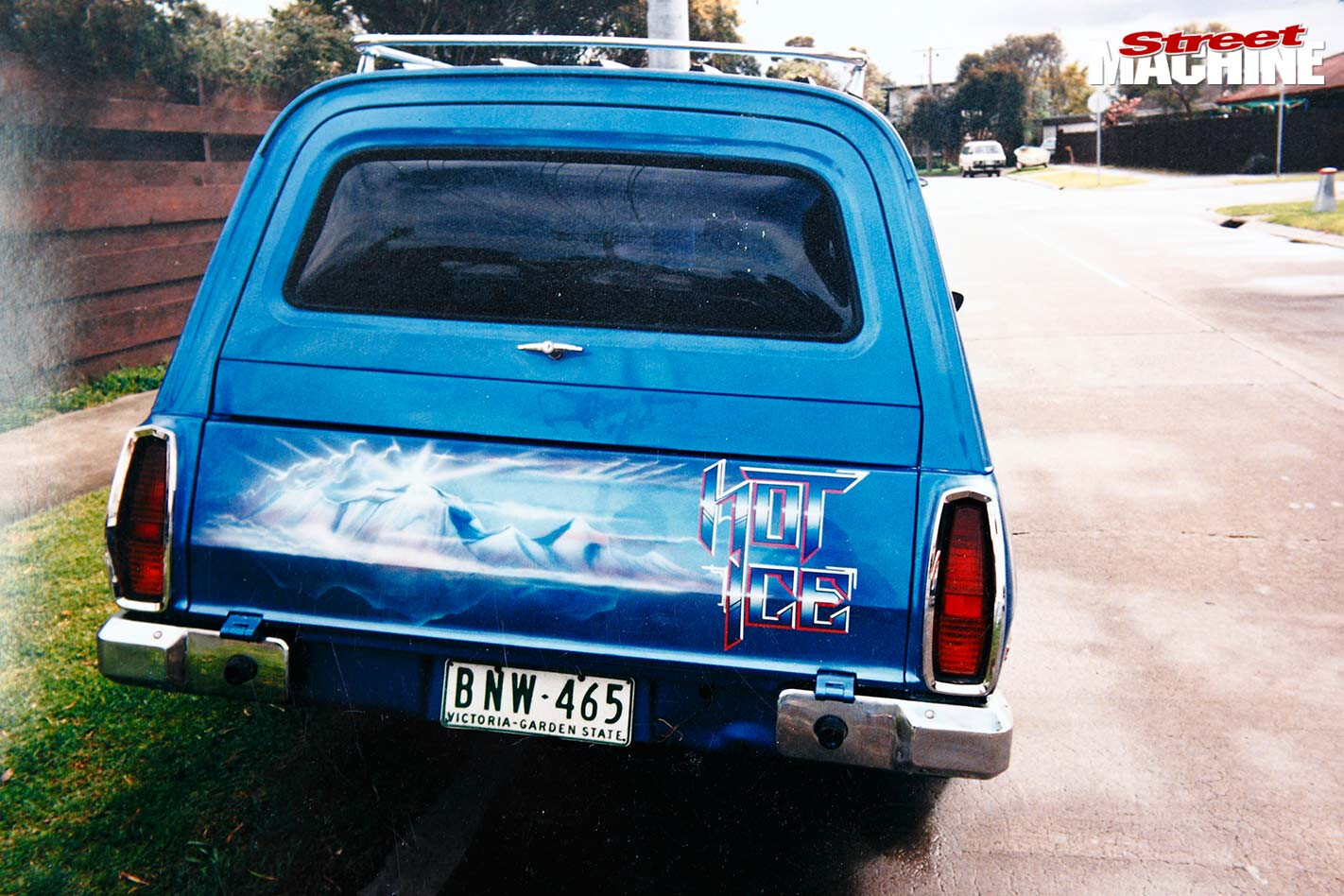
How did you get involved with the Mambo Sandman?
Our van club was invited to GM in 1976 to appraise the HX Sandman. When I was asked to meet with GM execs 25 years later for the Commodore version, I walked in to find pictures of me and Tangerine Dream on the walls next to the Mambo Concepts. It was a spin-out! We got the nod to build it but only had two weeks so worked around the clock and it was hugely successful. We got shafted on the credit for it though and have only recently been able to set the record straight.
Hot Ice was a Trans Am-fronted Holden painted by John. Popular on the show scene in the 80s, it featured classic van artwork of big-breasted warrior princesses in mythical landscapes with era-correct flares and 12 slotters
Do you still enjoy building and painting cars?
I love it, it’s in the blood. We’ve done a heap of high-profile cars and vans for radio stations, Pioneer and the defence force, and have had a lot of success with Damien Horner’s FINEVY Ute at Summernats. The signage on Eric Bana’s XB and Porsche is our handiwork and we’ve built quite a few Commodore vans and Hiaces, too. The van thing just won’t leave me! A mate and I run a hippy-styled Bedford van in the Variety Bash every year which is always a great time.
Going back to the early years, what would be your favourite vans and the most memorable job you did?
Stephen Ellis’s XX308 HJ – it went really hard and looked tough! Greg Tarte’s Misty Blues XB had some of the most tasteful artwork ever seen on a van, and the FJ vans of Pat Fay and Neil Dieckmann are some of the best contemporary vans ever built. As for me, I loved doing the artwork on John Scanlon’s Bedford called Major Tom. I was right into David Bowie and Ziggy Stardust at the time and had an absolute ball painting that van from front to rear in the space theme from the song.
I could never find an artistic medium that I was totally comfortable working with, but once I picked up an airbrush it all came together.” John’s airbrushing skills have been highly sought after for three decades now, and have been used on everything from bikes and helmets through to trucks, boats and helicopters
If an HQ van was plonked in your driveway tomorrow, would you be keen to build it or are those days behind you?
Mate, I would build another HQ in a heartbeat. In fact, when I retire the plan is to build Tangerine Dream III using an HQ van slammed down over 20s, running full late-model SS Commodore running gear and finished in HOK Tangello. I can’t wait.
The success of the white 3XY Freedom Machine Bedford paved the way for three new bikini-magnet black vans built by John and the crew at Vancraft. The Freedom Machine name was retained for the NSW and WA versions, while the Victorian van was called the Easy Roller. All vans featured custom fibreglass nosecones and flare kits to cover a huge set of Hotwires
ENTER HOLDEN SANDMAN
The release of the new VT Commodore body style saw the VS ute tagged along as a stop-gap measure until the release of the VU. To raise the profile of the new bodystyle and kneecap the success of Ford’s AU ute, Holden developed the VU Sandman concept vehicle unveiled at the 2000 Sydney International Motor Show.
The van idea had been kicking around the Holden design studio since ’97, but they needed some more grassroots input and turned to John Evans, who already had a history with Holden, having visited the factory to appraise the HX panelvan as part of the Victorian Panel Van Club in 1976.
“I was invited back to Holden after 25 years to discuss the new project,” says John. “I walked in to find huge prints of myself, Tangerine Dream and other old vans hanging on the wall – it was a spinout!
“We got the gig to do the body, paint and recreate the Mambo artwork, and soon took delivery of a VU mule ute and canopy.”
Last-minute delays at Holden saw the build time chopped down to two weeks and John, Scott Seedsman and the Racepaint team worked night and day to get it finished for the unveil.
“It was all top secret stuff with the factory in lock down for that time – we even slept on-site,” John says. “It didn’t matter though as we felt like part of something huge. The GM execs told me this was an official Holden, Mambo and Racepaint collaboration, so we were all on a real high.”
Sadly, the recognition never came and John and the team were left gutted.
“The Racepaint name was left off at the unveil, all promotional material, magazine coverage and even scrubbed off the sides of the van, but the biggest knee to the balls was the paint and body being credited back to Holden.”
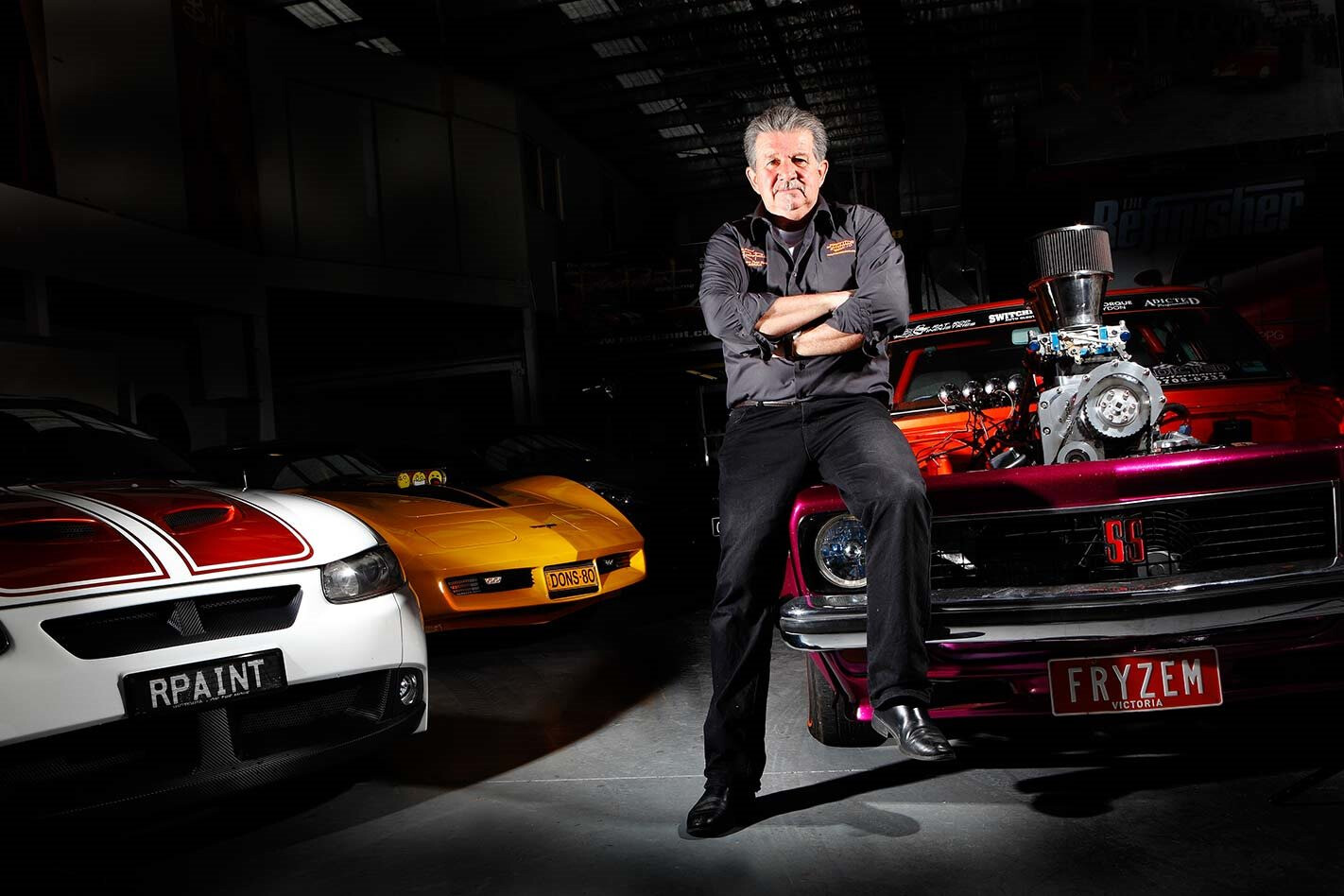
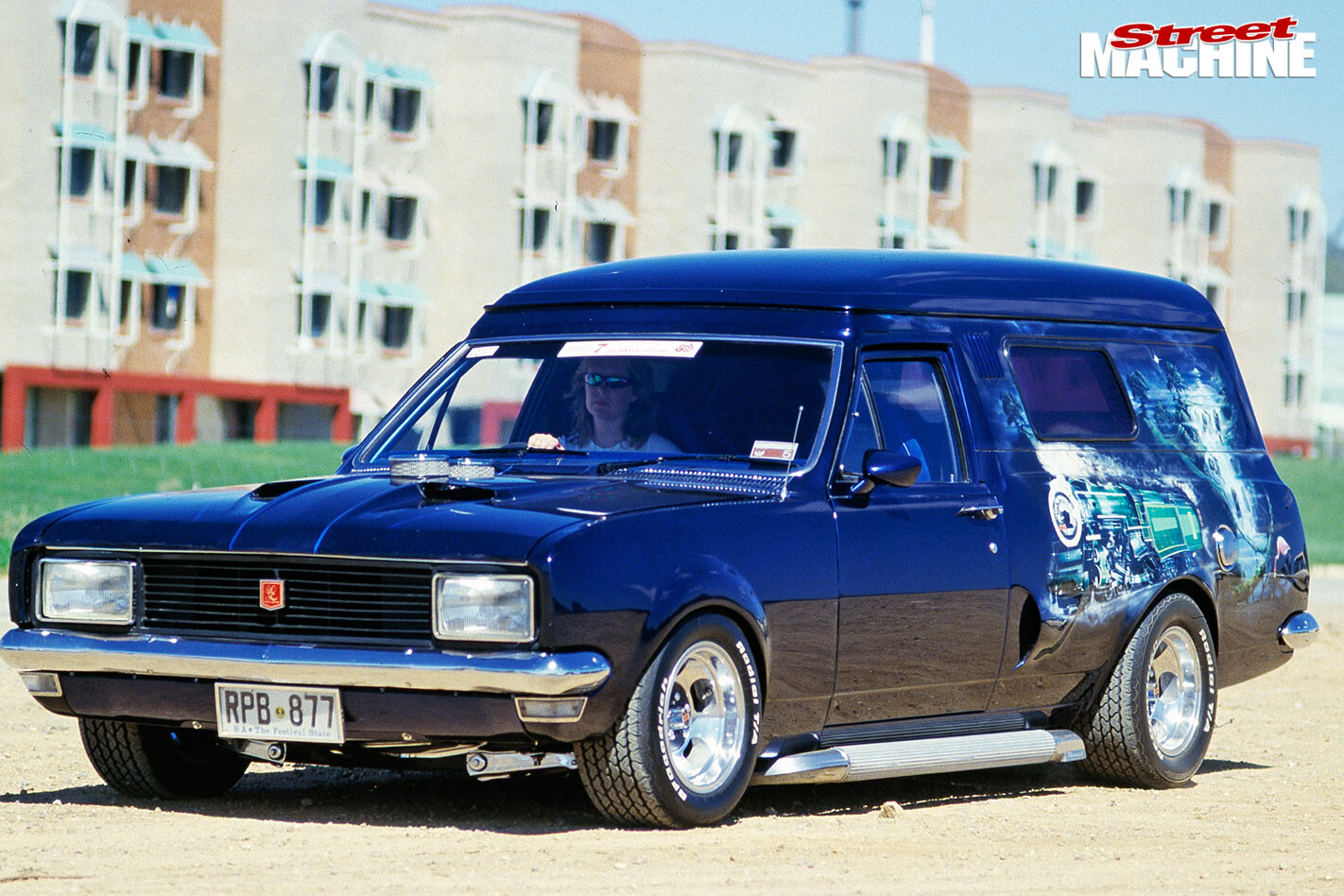
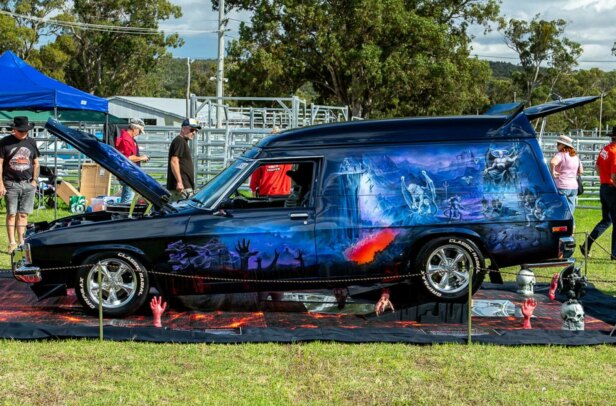
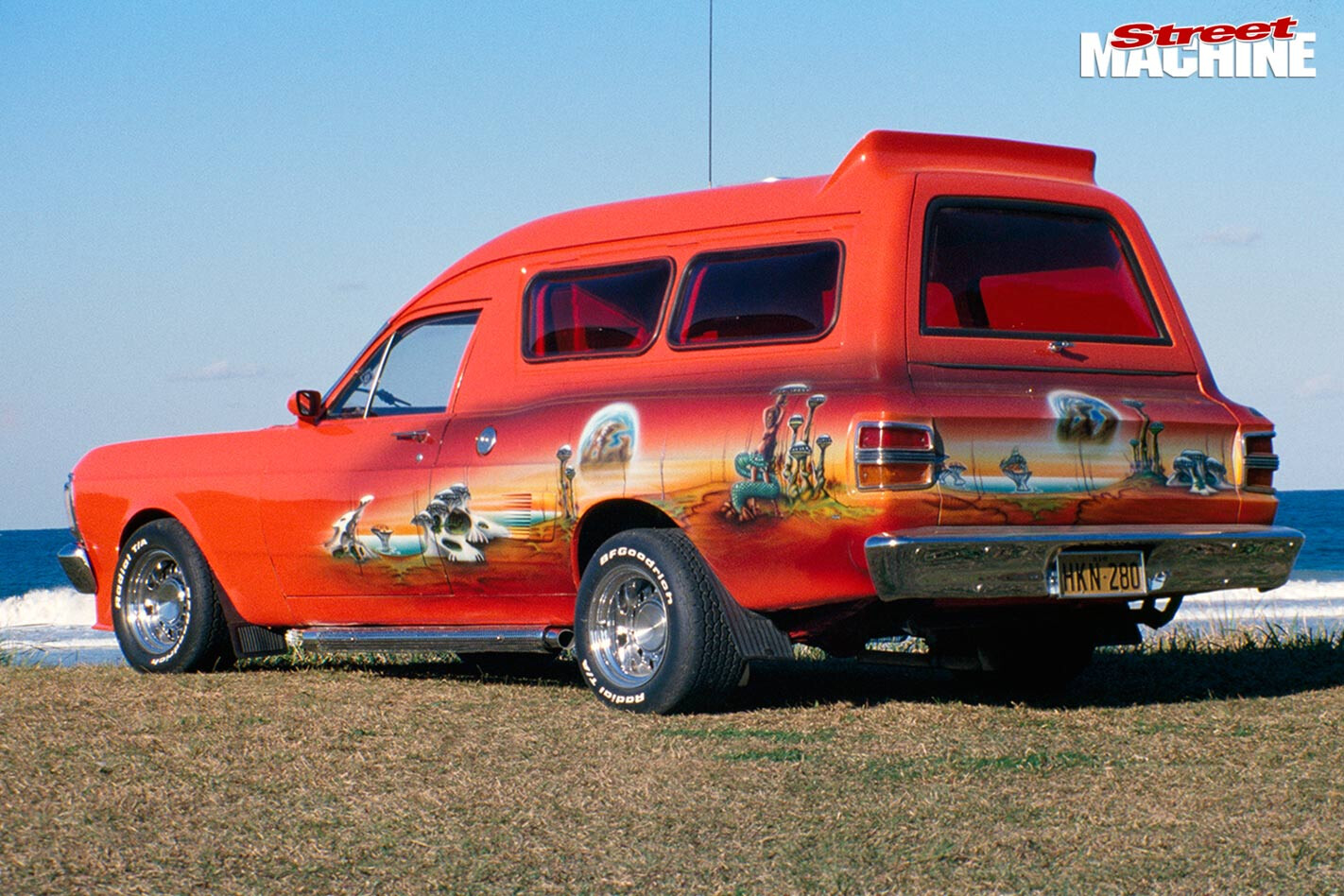
Comments